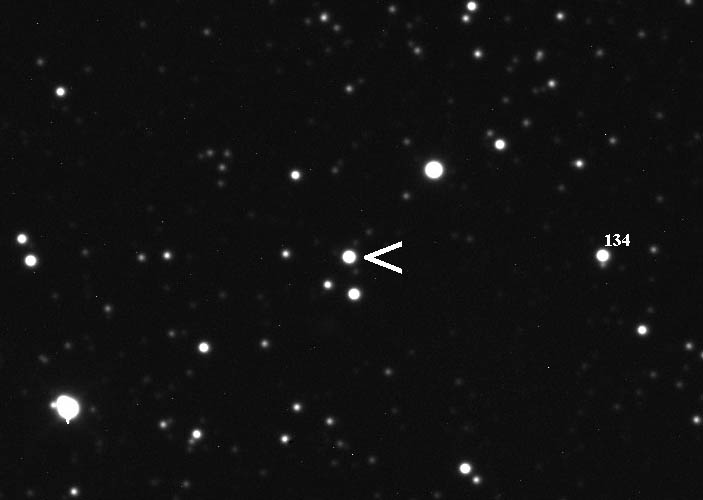 |
| Dwarf nova HT Cas seen in outburst (mag ~13.4) on November 2, 2010 "HTCas-LB1-2010Nov12" by Kevin Heider. Licensed under CC BY-SA 3.0 via Commons |
AY Lyraw ia an SU Ursae Majoris-type dwarf nova that has undergone several superoutbursts.
V344 Lyrae is notable for an extremely short period between superoutbursts coupled with one of the highest amplitudes for such a period.
Wikipedia
Dwarf nova
A U Geminorum-type variable star, or dwarf nova (pl. novae) is a type of cataclysmic variable star consisting of a close binary star system in which one of the components is a white dwarf that accretes matter from its companion.
The first one to be observed was U Geminorum in 1855; however, the mechanism was not known till 1974, when Brian Warner showed that the nova is due to the increase of the luminosity of the accretion disk.
They are similar to classical novae in that the white dwarf is involved in periodic outbursts, but the mechanisms are different: classical novae result from the fusion and detonation of accreted hydrogen, while current theory suggests that dwarf novae result from instability in the accretion disk, when gas in the disk reaches a critical temperature that causes a change in viscosity, resulting in a collapse onto the white dwarf that releases large amounts of gravitational potential energy.
Dwarf novae are distinct from classical novae in other ways; their luminosity is lower, and they are typically recurrent on a scale from days to decades. The luminosity of the outburst increases with the recurrence interval as well as the orbital period; recent research with the Hubble space telescope suggests that the latter relationship could make dwarf novae useful standard candles for measuring cosmic distances.
There are three subtypes of U Geminorum star (UG):
- SS Cygni stars (UGSS), which increase in brightness by 2-6 mag in V in 1–2 days, and return to their original brightnesses in several subsequent days.
- SU Ursae Majoris stars (UGSU), which have brighter and longer "supermaxima" outbursts, or "super-outbursts," in addition to normal outbursts. Varieties of SU Ursae Majoris star include ER Ursae Majoris stars and WZ Sagittae stars.
- Z Camelopardalis stars (UGZ), which temporarily "halt" at a particular brightness below their peak.
_______
Text snippets are provided for your convenience. Click on the links for much addition information, links and references.
No comments:
Post a Comment